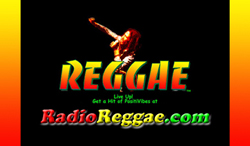
Reggae Music and it’s primary promoter, Bob Marley, had it’s birth in the 1960’s, the same prolific period for cultural development that promoted social change on a global level in a variety of ways. As developed by Marley and others in Jamaica, it grow way past the boundaries of the small island nation to become a worldwide force. The reason for Marley’s impact is the message he infused into the songs backed by a “heartbeat” rhythm that is inherently soothing. Marley’s message is a Spiritual message preaching hope and faith in a world where we can all come together. “One Love” and don’t worry because everything is going to be alright. For Marley, his songs were the new psalms – as Jah’s messenger he was sending out a vision of and a prayer for a more enlightened and less divided world inspired by hope and thanksgiving.
For lot’s of great REGGAE MUSIC and culture, visit Rasjohnmon’s RadioReggae.com – lot’s of Marley and other Reggae PositiVibes!
Here’s a recent article that appeared in The New York Times and was featured in the Week in Good News newsletter
By Sandra E. Garcia
Wa-ka, wa-ka is the sound of the first riffs that open up Bob Marley’s “Stir It Up.” Sister Nancy’s “Bam Bam” begins with slow-paced horns that give way to her cool cadence. Drums pause with the guitars at the top of Peter Tosh’s “Legalize It.”
It’s reggae: smooth, lovely, cool, collected, classic.
Jamaica, where the sound first gave a voice to the oppressed and the hopeful, applied to add reggae to Unesco’s list of the intangible cultural heritage of humanity, and the genre received the honor on Thursday, along with several other new additions.

“It will be a major achievement for Jamaica if we are successful in having the designation declared by Unesco,” Olivia Grange, the country’s culture minister, said at a news conference last month.
Reggae, which rose to prominence in the 1960s, often celebrates Jah, or God; ganja, or marijuana; and Ras Tafari, also known as Haile Selassie, the former Ethiopian emperor, whom Rastafarians revere as the messiah. It is also meant to put listeners in a calm groove.

As the sound bridged continents and gave the disparaged a way to heal and sing, it inspired many other genres, including dancehall; reggaeton, which is popular in Latin America, Puerto Rico and the Dominican Republic; and reggae fusion, which includes elements of jazz, hip-hop or pop and is popular in the United States and Europe.
Reggae has also been a pillar in the foundation of hip-hop. Songs like “Bam Bam” have been sampled countless times by artists including Jay-Z, Kanye West and Lauryn Hill.








